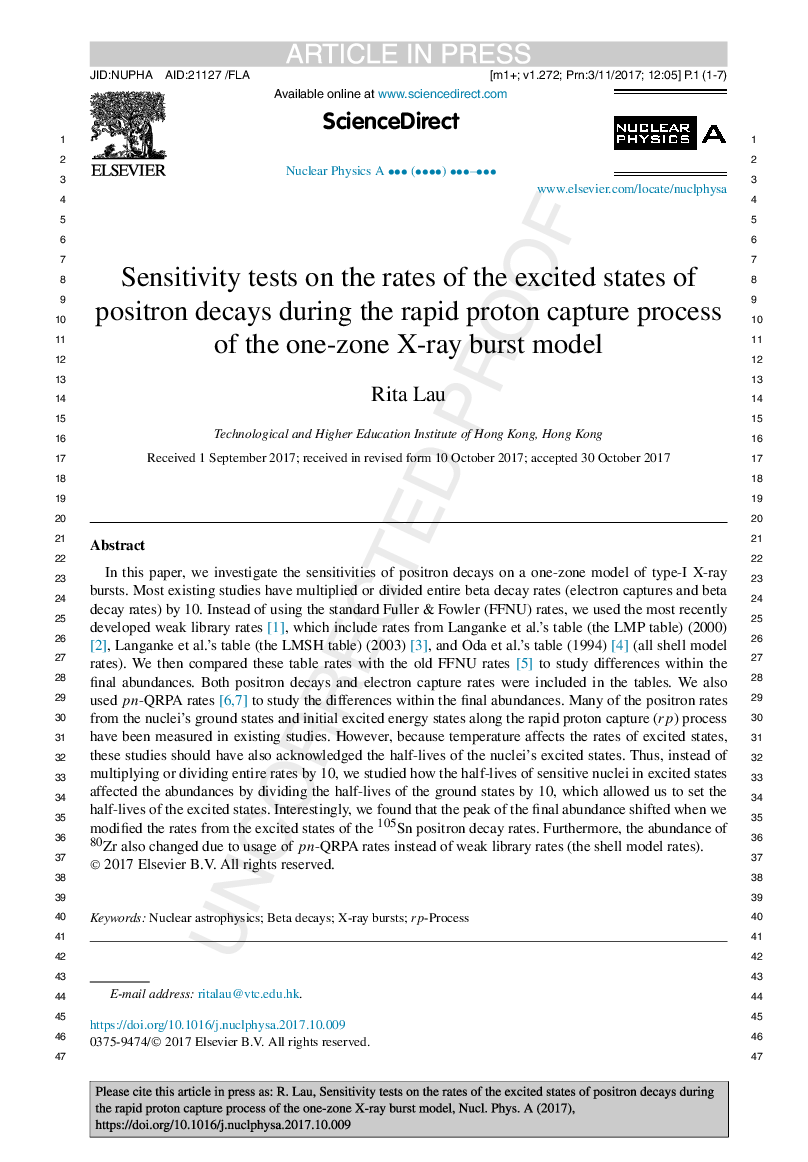| Article ID | Journal | Published Year | Pages | File Type |
|---|---|---|---|---|
| 8182825 | Nuclear Physics A | 2018 | 7 Pages |
Abstract
In this paper, we investigate the sensitivities of positron decays on a one-zone model of type-I X-ray bursts. Most existing studies have multiplied or divided entire beta decay rates (electron captures and beta decay rates) by 10. Instead of using the standard Fuller & Fowler (FFNU) rates, we used the most recently developed weak library rates [1], which include rates from Langanke et al.'s table (the LMP table) (2000) [2], Langanke et al.'s table (the LMSH table) (2003) [3], and Oda et al.'s table (1994) [4] (all shell model rates). We then compared these table rates with the old FFNU rates [5] to study differences within the final abundances. Both positron decays and electron capture rates were included in the tables. We also used pn-QRPA rates [6], [7] to study the differences within the final abundances. Many of the positron rates from the nuclei's ground states and initial excited energy states along the rapid proton capture (rp) process have been measured in existing studies. However, because temperature affects the rates of excited states, these studies should have also acknowledged the half-lives of the nuclei's excited states. Thus, instead of multiplying or dividing entire rates by 10, we studied how the half-lives of sensitive nuclei in excited states affected the abundances by dividing the half-lives of the ground states by 10, which allowed us to set the half-lives of the excited states. Interestingly, we found that the peak of the final abundance shifted when we modified the rates from the excited states of the 105Sn positron decay rates. Furthermore, the abundance of 80Zr also changed due to usage of pn-QRPA rates instead of weak library rates (the shell model rates).
Related Topics
Physical Sciences and Engineering
Physics and Astronomy
Nuclear and High Energy Physics
Authors
Rita Lau,
